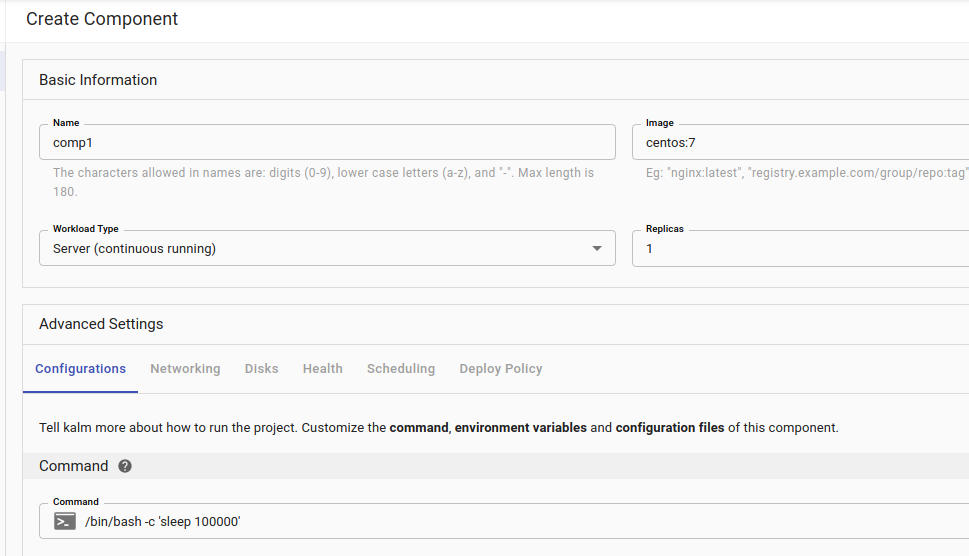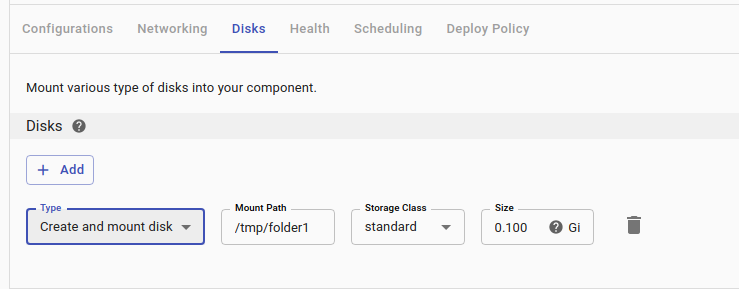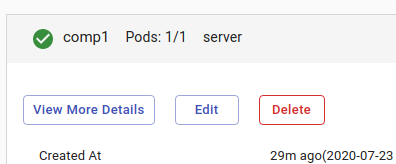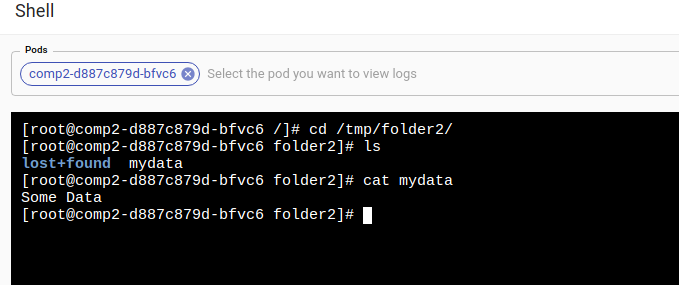Mount Disks
In Kubernetes, volumes are directories avaliable to containers to use as filesystem. Volumes persist beyond the lifecycle of pods.
There are many types of Volumes. Kalm simplifies the typical usecase by representing them as "Disks".
Let's create an application with 2 containers, and share a Disk between them.
- create an application
- create a component called
comp1withcentos:7as the image - one caviat is that containers must have a running process, or it will be terminated immediately after creation. Therefore even though we don't need the container to do anything, we still need to give it a command to stay alive:
- enter
/bin/bash -c 'sleep 100000'for the command, basically telling it to sleep

Now lets create and mount a disk
- Go to the Disks tab
- Click Add Disk
- Select
Create and mount diskin the Type dropdown - enter
/tmp/folder1for Mount Path - select
standardfor Storage Class - enter
0.1(Gi) for Size - click Update Component

After the component is created, open a shell and navigate to the mounted disk, and create a file representing application data.
Now let's create a second component, identical to the first one:
- create a second component called
comp2withcentos:7as the image - enter
/bin/bash -c 'sleep 100000'for the command
This time, let's mount the existing disk we created above with comp1
- Go to the Disks tab
- Click Add Disk
- Select
Mount an existing diskin the Type dropdown - enter
/tmp/folder2for Mount Path - select the option that starts with
pvc-comp1-...in the Claim Name dropdown - click Update Component

Let's delete comp1

After comp2 is created, open a shell to the pod and navigate to the mounted disk
Let's check to see if the file we created by shelling into comp1's container exists here
Hey it seems the data created while we were attached to comp1 (which no longer exists) is avaliable in comp2.

Recap
In this guide, we created two components attached to the same Disk, and shown that data is shared across the two volumes, and the disk survives the deletion of components.
 Kalm
Kalm